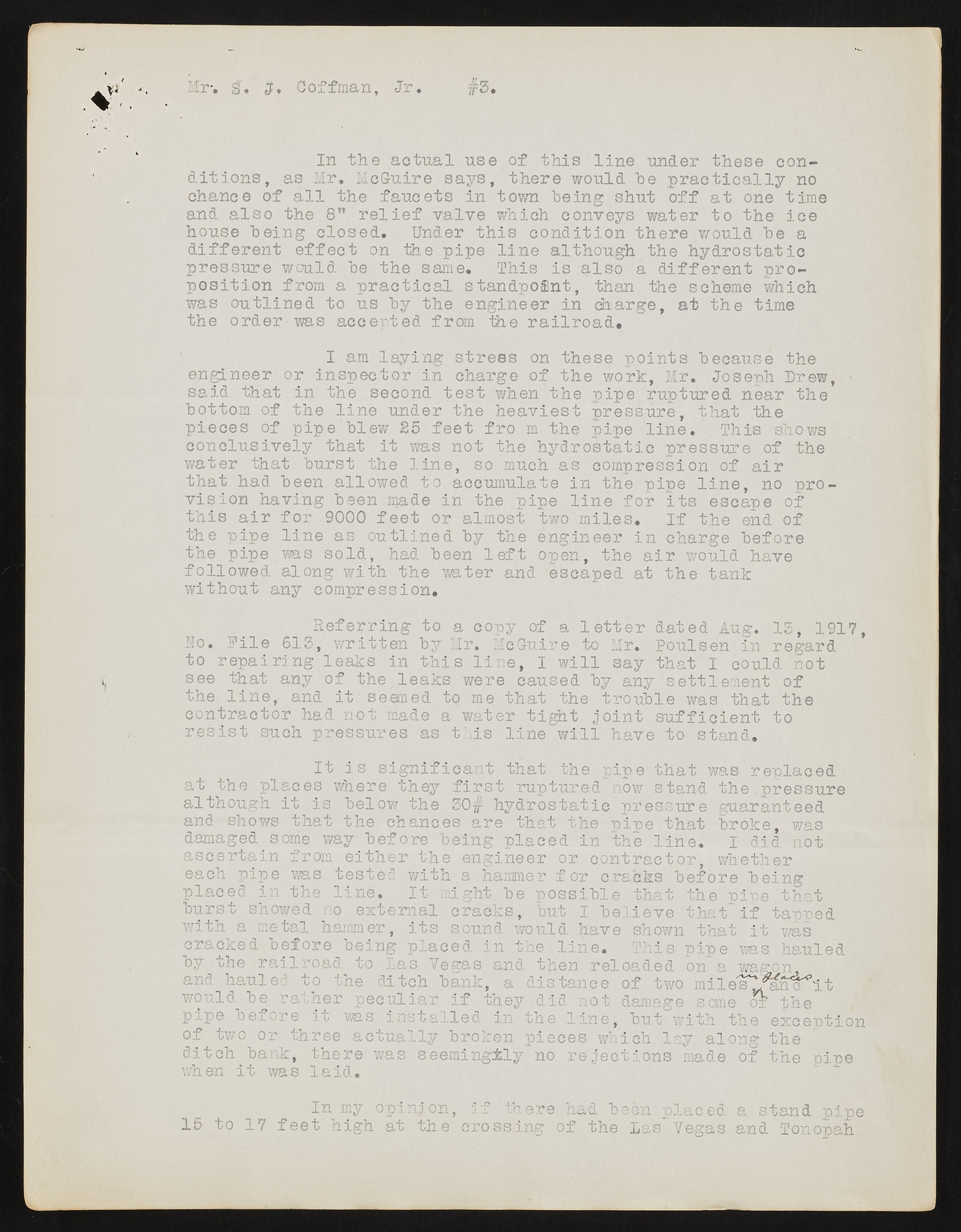Copyright & Fair-use Agreement
UNLV Special Collections provides copies of materials to facilitate private study, scholarship, or research. Material not in the public domain may be used according to fair use of copyrighted materials as defined by copyright law. Please cite us.
Please note that UNLV may not own the copyright to these materials and cannot provide permission to publish or distribute materials when UNLV is not the copyright holder. The user is solely responsible for determining the copyright status of materials and obtaining permission to use material from the copyright holder and for determining whether any permissions relating to any other rights are necessary for the intended use, and for obtaining all required permissions beyond that allowed by fair use.
Read more about our reproduction and use policy.
I agree.Information
Digital ID
Permalink
Details
Member of
More Info
Rights
Digital Provenance
Publisher
Transcription
Mr-, g . J. Coffman, Jr #3. In the actual use of this line under these conditions, as Mr. McGuire says, there would he practically no chance of all the faucets in town being shut off at one time and also the 8” relief waive which conveys water to the ice house being closed. Under this condition there would be a different effect on the pipe line although the hydrostatic pressure would be the same. This is also a different proposition from a practical standpoint, than the scheme which was outlined to us by the engineer in charge, at the time the order was accepted from the railroad, I am laying stress on these points because the engineer or inspector in charge of the work, Mr. Joseph Drew, • said that in the second test when the pipe ruptured near the bottom of the line under the heaviest pressure, that the pieces of pipe blew 25 feet fro m the pipe line. This shows conclusively that it was not the hydrostatic pressure of the water that burst the line, so much as compression of air that had been allowed to accumulate in the pipe line, no provision having been made in the pipe line for its escape of this air for 9000 feet or almost two miles. If the end of the pipe line as outlined by the engineer in charge before the pipe was sold, had been left open, the air would have followed along with the water and escaped at the tank without any compression. Referring to a copy of a letter dated Aug. 15, 1917, No. Rile 615, written by Mr. McGuire to Mr. Poulsen in regard to repairing leaks in this line, I will say that I could not see that any of the^leaks were caused by any settlement of the line,- and it seemed to me that the trouble was that the contractor had not made a water tight joint sufficient to resist such pressures as this line will have to stand. It is significant that the pipe that was replaced at the places where they first ruptured now stand the pressure although it is below the 50$ hydrostatic pressure guaranteed and shows that the ehances are that the pipe that broke, was damaged^some way before being placed in the line. I did not ascertain from either the engineer or contractor, whether each pipe was tested with a hammer for cracks before being placed in the line. It might be possible that the pipe that burst showed no external cracks, but I believe that'*' if tapped with a metal hammer, its sound would have shown that it was cracked before being placed in the line. This pipe was hauled by the railroad to las Vegas and then reloaded on a wagon, and hauled to the ditch bank, a distance of two milelf^^no*! t would be rather peculiar if they did not damage some of the pipe before it was installed in the line, but with the exception of two or three actually broken pieces which lay along the ditch bank, there was seemingxly no rejections made of the pipe when it was laid. f In my opinion, if there had been placed a stand pipe 15 to 17 feet high at the crossing of the las"Vegas and Tonopah

